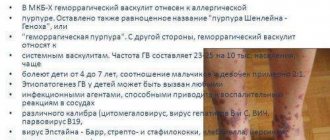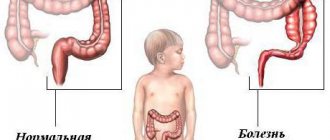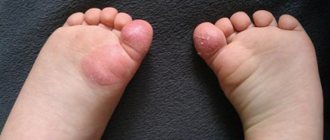Risk factors
Risk factors contributing to the development of pharyngitis include:
- the child eating food that is too cold (for example, ice cream);
- improper breathing (through the mouth), especially in winter;
- low level of immunity;
- lack of vitamins in the body;
- diseases of the gastrointestinal tract and endocrine system.
Allergic reactions can also provoke the occurrence of pharyngitis.
Free consultation on training issues
Our consultants are always ready to tell you about all the details!
Prevention
Preventing the occurrence of a disease is much easier than treating it. The main recommendations of doctors to protect against the problem are:
- prevention of hypothermia;
- wearing clothes that are appropriate for the season;
- ensuring sufficient air humidity in the house;
- timely treatment of inflammation in the body;
- compliance with hygiene rules.
It is important for parents to teach their child from an early age to use only their own utensils and to regularly wash their hands not only before eating, but also before touching the face, especially the nose and mouth area.
Classification
Based on the course, acute, subacute and chronic forms of pharyngitis are distinguished. There is also a classification based on the condition of the pharyngeal mucosa. With catarrhal pharyngitis, the pharynx looks swollen, hyperemic, with the mucous membrane gradually acquiring a characteristic gray-pink hue. With the hypertrophic form of pharyngitis, the mucous membranes of the larynx and pharynx become thicker, with hypertrophic growth of ridges on the side of the pharynx. The palatine arches also thicken, and granulosa and nodular formations are observed at the back of the pharynx.
The subatrophic type of pharyngitis leads to focal or diffuse thinning of tissue. In this case, the mucous membranes look pale, atrophied, with thinned blood vessels.
Causes
The disease develops against the background of the fact that negative factors cause excessive activity of the immune system, due to which it begins to provoke the development of a number of neoplasms on the mucous membrane, associated with the detection of even minor pathogens. As a result, inflammation develops and tissue changes occur. The main factors causing hypertrophic pharyngitis, in addition to its advanced acute form, are the following:
- living in areas with unfavorable environmental conditions;
- working in hazardous industries in violation of safety rules;
- long regular stay in a room in which the air is very dry and warm;
- smoking – not only active but also passive smoking has a negative effect on the mucous membrane and the body as a whole;
- abuse of alcoholic beverages - even not strong ones, they irritate and damage the tissues of the pharynx, making them more susceptible to pharyngitis;
- diseases of the cardiovascular system, in which blood circulation in the tissues of the pharyngeal mucosa is disrupted, as well as those that lead to congestion in the respiratory system;
- serious metabolic disorders, especially against the background of pathologies of the endocrine system;
- regular occurrence of allergies;
- disturbances in the structure of the pharynx;
- constant significant lack of vitamins.
Chronic pathologies of the nasopharynx, such as tonsillitis, sinusitis and rhinitis, can also cause the disease. Pathogenic bacteria will abundantly penetrate the mucous membrane and remain dormant in it until factors unfavorable for the immune system appear. When they develop an exacerbation of the disease.
Symptoms of pharyngitis in children
The symptoms of the disease depend on what form it takes, as well as on other pathologies that may be present in the child’s body. However, there are several common symptoms of pharyngitis:
- the throat feels sore and dry;
- a cough occurs (it is dry, superficial, sometimes painful);
- regional lymph nodes enlarge;
- the temperature rises (usually to low-grade levels);
- sometimes my head hurts.
In most cases, symptoms are accompanied by feelings of constant drowsiness and general weakness of the body. As for young children, their disease can be much more severe than in older patients. Because babies experience a feeling of discomfort in their throat, they begin to cry a lot, do not eat, and their sleep becomes restless. The swallowing function is disrupted, along with salivation, which becomes uncontrollable.
How to prevent the development of chronic pharyngitis in a child?
The rules of prevention are quite simple. Firstly, any child needs physical activity, walks in the fresh air and adequate thermal conditions (clothing appropriate for the weather). Secondly, you need to maintain the temperature and humidity in the room where he plays and sleeps. This is especially important in winter, when the heating is turned on and the air becomes very warm and dry. Air purification and regular wet cleaning of the room also play a very important role.
Thirdly, if you have a sore throat and inflammation, you should seek advice from a pediatric otolaryngologist (or a pediatrician, who, if necessary, will refer the child for examination to a specialist). This will help to determine the cause of the disease earlier and more accurately and begin treatment that will get rid of the problem completely.
Complications
Pharyngitis is a safe disease that responds well to treatment, provided it is properly managed. If a chronic form develops, in which the symptoms become permanent, it poses a great danger and is difficult to treat. She often quotes:
- to chronic bronchitis;
- laryngitis;
- tracheitis.
Free consultation on training issues
Our consultants are always ready to tell you about all the details!
In severe cases, the development of peritonsillar abscess or acute rheumatism of the joints is possible (if pharyngitis was caused by group A beta-hemolytic streptococcus).
Factors influencing the occurrence of the disease
The granular type of pharyngitis is a polyetiological disease. This disease develops only when several causes are combined. Among its main premises one can see the following:
- the presence of a fertile environment for pathogens: vitamin deficiency, decline in the protective functions of the immune system, concomitant infectious lesions;
- genetic predisposition (the disease threatens those people whose relatives have previously suffered from this disease).
Direct factors provoking the disease
Complicated granular pharyngitis can result from:
- decreased immune resistance;
- frequent occurrence of exacerbations of catarrhal chronic pharyngitis;
- release of gastric contents into the nasopharynx (reflux esophagitis);
- chronic sinusitis, sinusitis or sinusitis, which accompanies constant infection of mucus in the nasopharynx;
- chronic illnesses associated with the respiratory system (tracheitis, frontal sinusitis, pneumonia, bronchitis);
- injury to the mucous membrane of the nasopharynx;
- injury to the nasal septum or its abnormal development, complicating or blocking breathing through the nose;
- diseases of the heart and blood vessels, which are caused by stagnation of lymph in the respiratory organs;
- seasonal allergic manifestations.
Injuries to the nasopharyngeal mucosa can be divided into:
- thermal, obtained by contact with high-temperature liquids or their vapors;
- chemical origin, resulting from exposure to alkali, acids (including burns from ammonia fumes or chlorine);
- mechanical origin (when swallowing piercing objects).
Indirect factors that cause pathology
The list of indirect reasons includes external factors:
- excessively dry air masses in the house during the heating season;
- work in hazardous production and the presence of bad habits in adults (smoking, alcohol abuse), as well as evaporation of aggressive chemicals;
- poor environmental condition, characterized by smog, dust, air pollution.
Diagnostics
First of all, the child’s parents turn to a pediatrician for help, but if the disease cannot be cured, they should consult an ENT doctor. Finding out the cause of the infection should be a priority. For this purpose, a number of laboratory tests are used in the form of:
- throat swab for microflora and sensitivity to antibacterial drugs;
- blood tests;
- endoscopic examination of the nose and pharynx.
Also, in case of relapses, examinations of the child by an allergist or gastroenterologist are indicated.
Diagnosis of pharyngitis
The presence of manifestations of pharyngitis in a child is a serious reason to contact an otolaryngologist at a medical institution.
At the initial appointment, the specialist carefully listens to the complaints of the young patient and his parents, clarifies the necessary details (how long the symptoms last, whether there have been contacts with sick people, etc.). A carefully collected anamnesis allows the doctor to make a preliminary diagnosis and suggest the most likely cause of the development of the pathology. Further diagnosis of pharyngitis includes the following examinations:
- Instrumental examination of the pharynx using a special device - a laryngopharyngoscope.
- Laboratory analysis of a throat swab to determine the nature of the disease.
Only after receiving the results of all studies can the doctor objectively assess the characteristics of the course of the disease and, therefore, select the most appropriate treatment tactics.
Conservative therapy
All foods that irritate the mucous membrane of the mouth and pharynx should be excluded from the diet (too hot, cold, sour or salty). If a child is already three years old, he should be taught to gargle. It is recommended to consume foods in liquid form to make it easier for children to swallow.
Antiseptics are prescribed as therapy, and if the disease is bacterial in nature, antibiotics are prescribed, especially if we are talking about group A beta-hemolytic streptococcus. As is known, it is particularly dangerous and can cause the maximum number of complications. At high temperatures, it is advisable to prescribe non-steroidal anti-inflammatory drugs.
Alkaline drinking and inhalations are also indicated (they can be compressor or ultrasonic). If there is a history of laryngospasm or false croup, parents should always have inhalations at hand in order to promptly introduce one of the hormones into the child’s body - before the ambulance team arrives. Antihistamines are used to relieve swelling.
It is important to ensure vocal rest with limited communication.
Treatment of pharyngitis
The treatment tactics for pharyngitis at SM-Doctor are selected individually, depending on the characteristics of the structure and functioning of the patient’s body, as well as the accompanying manifestations of the disease.
Therapy includes eliminating the factors that caused the development of the disease, as well as compliance with the following recommendations:
- gargling with antiseptics;
- use of aerosols;
- carrying out inhalations;
- taking antihistamines (if the disease is allergic);
- antibiotic therapy (for bacterial origin of pharyngitis);
- exclusion of rough, hot, spicy and cold foods;
- parental refusal to smoke (tobacco smoke, which the child inhales, greatly undermines the local protection of the respiratory tract, making them especially vulnerable to pathogenic microorganisms).
Surgery
For some forms of pharyngitis, surgical treatment is sometimes used. We are talking about modern laser technologies that effectively stop inflammatory processes and eliminate circulatory disorders. Thanks to this treatment, you can quickly relieve all pathological symptoms - in the form of swelling, dry throat, pain and cough. If we compare laser surgical treatment with other methods, it is the most gentle of all, which helps to increase the effectiveness of the procedure and significantly reduces the rehabilitation period.
The fourth generation carbon dioxide laser is used for treatment. The manipulation itself is not invasive. It is non-contact, there is no direct intervention into the tissue. Thanks to built-in technologies, doctors completely visually control the entire process, so the procedure is absolutely safe.
Kinds
This form of the disease can have two types. Depending on which of them is diagnosed, the exact treatment method is determined. Granular hypertrophic pharyngitis affects only the back wall of the pharynx. With it, tissue swelling is not felt so much at the onset of the disease, which is why not all patients seek medical help in a timely manner.
Lateral hypertrophic pharyngitis is manifested by more acute pain and difficulty breathing. It is extremely difficult to ignore it for a long time, which is why treatment most often begins on time. The diagnosis is made after examining the patient's pharynx.
Forecast
The granular variety of pharyngitis does not pose a threat to human life. The disease is very unpleasant. Experts give optimistic forecasts. Even in cases of a chronic form of the disease, stable remission can be achieved.
Frequently recurring relapses of the disease cause discomfort to the person, reducing performance. To prevent this, it is important to promptly and effectively treat the granulomatous type of pharyngitis. Complete and adequate therapy with the elimination of all foci of inflammation ensures regression of the disease in 2-3 weeks.
Diagnostic features
The basis for diagnosing the granulosa variety of pharyngitis is a visual examination of the patient by a specialist. During this process, the doctor discovers the presence of numerous small red nodules on the back wall of the throat (the image of the granules can be seen in the photo).
There is swelling and redness of the mucous membrane. Granular pathology is characterized by the accumulation of thick mucous and purulent discharge.
During the examination, the specialist uses a special device (pharyngoscope). In order to identify the pathological pathogen and the appropriate antibiotic drug for treatment, a smear is required from the patient. A patient with granulosa pharyngitis may also require the help of a cardiologist, gastroenterologist, endocrinologist or dentist.
Activities related to disease prevention
You can avoid the development of pharyngitis of the granulomatous variety if you do not deviate from a healthy diet. If it is impossible to adhere to it, it is recommended to include fortified fruit and vegetable components in the diet. It is advisable to do physical exercise to tone the body and strengthen the immune system.
It is necessary to abstain from alcohol and cigarettes or reduce these bad habits to a minimum. In case of acute pharyngitis, it is important to adhere to bed rest and constant ventilation of the premises. It is important to regularly wet clean your home to avoid the accumulation of pathogenic microorganisms on objects.
Therapy
Treatment of this type of pharyngitis is carried out taking into account the general condition of the patient and the likelihood of complications developing. Based on these factors, the doctor decides whether there is a need for hospitalization. Therapy requires an integrated approach.
The recommendations of specialists for the treatment of patients suffering from granulosa pharyngitis include the following:
- The need to humidify the air masses in the room where the patient is. For this, it is recommended to use special humidifiers. An alternative would be wet towels or containers of water.
- Quitting alcohol and smoking. This is necessary to avoid additional irritating effects on the mucous membrane of the nasopharynx. Otherwise, the treatment process may take a long time.
- Making adjustments to the patient's daily diet. Hot, cold, spicy, sour, salty foods should be excluded. The patient should not drink carbonated drinks, concentrated juices and fruit drinks. The menu should consist of food with a soft consistency (porridge, yoghurt, vegetable stew, meat pulp). It is necessary to provide the sick person with plenty of fluids (2-2.5 liters per day).
Drug therapy
Treatment of symptoms of granulosa pharyngitis in children and adults can take place in a hospital setting or at home. This is decided by the doctor.
Information about possible complications
Granulomatous pharyngitis becomes more complicated if it is not diagnosed and treated in a timely manner. Its most unpleasant consequences include the development of atrophic rhinorrhea and laryngitis.
The latter is especially dangerous if its development occurs in childhood. As a result, you may experience suffocation and bronchial asthma.
A runny nose of the atrophic variety is of great danger. Against this background, malignant tumors may arise. You can avoid complications by promptly treating the acute form of the disease, preventing its granulomatous form from developing.










